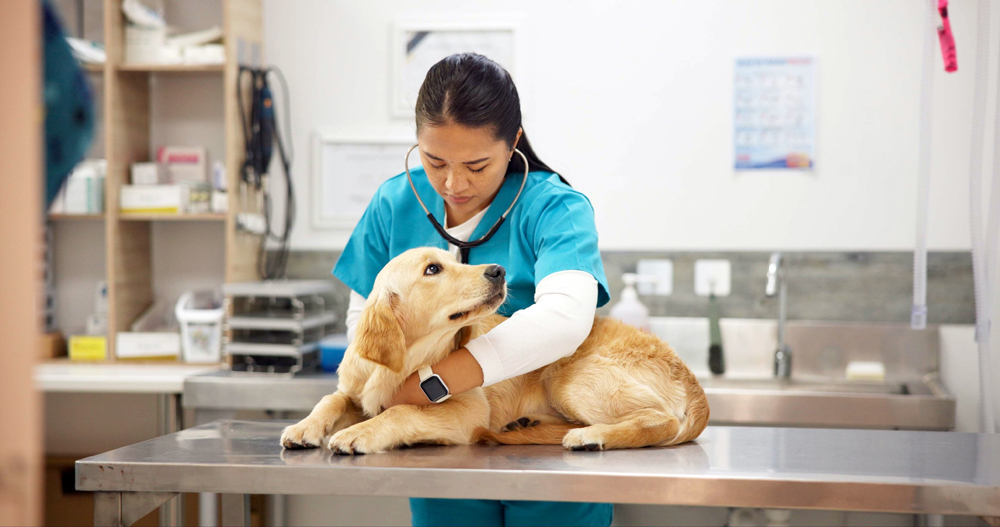Veterinary relief work is an essential and often underappreciated aspect of the animal care industry. Relief veterinarians, often referred to as locum veterinarians in some regions, fill in for full-time Veterinary staff during periods of absence or high demand. This work is vital for ensuring continuity of care for animals and smooth operations in Veterinary practices. Relief work is not limited to veterinarians; Veterinary technicians and assistants also play a critical role in maintaining high standards of animal care during these temporary assignments.
Veterinary relief work offers a unique set of challenges and rewards. For those considering a career in this field, understanding the opportunities and requirements is crucial. Relief work is not merely a temporary stopgap for clinics but a career path in its own right, offering flexibility, variety, and growth opportunities.
The Role of Jobs for Veterinary Relief Workers
Veterinary relief workers step into clinics, hospitals, and shelters to provide temporary support. Their duties vary widely depending on the needs of the facility but generally include diagnosing and treating animals, performing surgeries, consulting with pet owners, and collaborating with clinic staff. Relief veterinarians must quickly adapt to new environments, policies, and team dynamics while maintaining a high level of care.
In addition to veterinarians, Veterinary technicians and assistants are also in high demand for relief positions. These professionals perform essential tasks such as assisting in surgeries, conducting diagnostic tests, managing patient records, and educating pet owners. Their role is integral to ensuring that clinics continue to operate smoothly in the absence of regular staff.
Why Choose Veterinary Relief Work?
Relief work appeals to individuals seeking flexibility and variety in their professional lives. Unlike traditional Veterinary positions, relief workers can often choose their schedules, the types of practices they work with, and the locations they serve. This freedom allows for a better work-life balance and the ability to explore different areas of Veterinary medicine, from small animal practices to exotic animal care.
Veterinary relief work is also an excellent option for those transitioning between jobs, reentering the workforce, or seeking additional income. It provides an opportunity to maintain clinical skills while exploring various professional settings. In addition, relief work can serve as a stepping stone for veterinarians and technicians considering opening their own practices by allowing them to gain diverse experience and build a professional network.
Jobs for Veterinary Relief Workers: Key Skills
Success as a Veterinary relief worker requires a unique set of skills. Adaptability is paramount, as relief workers must quickly familiarize themselves with new clinics, teams, and protocols. Strong communication skills are essential for building rapport with staff and clients and ensuring seamless transitions in patient care. Problem-solving abilities and clinical expertise are also critical, as relief workers often handle a wide range of cases with minimal oversight.
For Veterinary technicians and assistants, technical proficiency and the ability to work independently are equally important. These professionals must be able to step into a clinic and immediately contribute, whether by assisting in surgeries, performing laboratory tests, or managing patient records. Time management and organizational skills are also crucial, as relief workers frequently juggle multiple responsibilities.
Types of Veterinary Relief Work Settings
Relief workers can find opportunities in a variety of settings, each with its own unique challenges and rewards. Small animal clinics are the most common employers of relief workers, providing care for dogs, cats, and other pets. These clinics often require temporary staff to cover vacations, maternity leaves, or sudden surges in patient volume.
Emergency and specialty hospitals also frequently hire relief veterinarians and technicians. These settings demand a high level of expertise and the ability to handle stressful situations. Relief workers in emergency clinics may treat critical cases, perform advanced diagnostics, and manage intensive care units.
Shelters and nonprofit organizations are another significant source of relief work opportunities. These positions often involve spaying and neutering, treating illnesses and injuries, and providing preventive care for animals in need. Working in a shelter environment can be emotionally rewarding but also challenging due to limited resources and high patient volumes.
For those interested in large animal or exotic animal care, relief work is available in practices specializing in equine medicine, livestock, or zoo animals. These roles may require additional training or certifications but offer unique experiences for Veterinary professionals.
How to Find Jobs for Veterinary Relief Workers
Veterinary relief work opportunities can be found through various channels. Networking within the Veterinary community is one of the most effective ways to learn about available positions. Attending industry conferences, joining professional organizations, and participating in online forums can help build connections and uncover job openings.
Several platforms specialize in connecting relief workers with Veterinary practices. Websites like Relief Rover and VetRelief match veterinarians and technicians with temporary positions across the country. These platforms o
Social media can also be a valuable tool for finding relief work. Many clinics and hospitals post job openings on platforms like LinkedIn, Facebook, and Instagram. Following Veterinary groups and organizations on social media can provide real-time updates on opportunities.
Challenges in Veterinary Relief Work
While relief work offers many advantages, it is not without its challenges. One of the most significant difficulties is the need to quickly adapt to new environments and workflows. Relief workers often have limited time to familiarize themselves with clinic protocols, equipment, and software, which can be overwhelming.
Building relationships with staff and clients can also be challenging for temporary workers. Establishing trust and rapport in a short period requires excellent interpersonal skills and a proactive approach. In addition, relief workers may encounter resistance from regular staff who are unfamiliar with their capabilities or concerned about disruptions to the team dynamic.
Another challenge is the unpredictable nature of relief work. While some professionals appreciate the flexibility, others may find the lack of stability and consistent income stressful. Planning and financial management are essential for navigating the ups and downs of this career path.
Tips for Success in Veterinary Relief Work
To thrive in jobs for Veterinary relief workers, preparation is key. Keeping licenses, certifications, and professional liability insurance up to date is crucial for securing positions. Maintaining a well-organized portfolio that includes references, case studies, and examples of past work can also make a strong impression on potential employers.
Developing a reputation for reliability and professionalism is essential for building a successful career in relief work. Arriving on time, being well-prepared, and maintaining a positive attitude can go a long way in earning repeat opportunities and referrals.
Relief workers should also invest in ongoing education and skills development. Staying current with advancements in Veterinary medicine ensures that they can provide high-quality care in any setting. Participating in continuing education courses, webinars, and workshops can help relief workers remain competitive in the job market.
Finally, self-care is vital for managing the physical and emotional demands of relief work. Establishing boundaries, taking breaks, and seeking support from peers can help prevent burnout and ensure long-term success in this field.
The Future of Jobs for Veterinary Relief Workers
The demand for Veterinary relief workers is expected to grow in the coming years. The increasing prevalence of pet ownership, coupled with a shortage of Veterinary professionals, has created a need for temporary staffing solutions. Relief work offers a flexible and efficient way for clinics to address these challenges while maintaining high standards of care.
Advances in technology are also shaping the future of Veterinary relief work. Telemedicine platforms and mobile Veterinary services are expanding the scope of relief work, allowing professionals to provide care remotely or in nontraditional settings. These innovations offer new opportunities for relief workers to diversify their skills and reach.
As the field evolves, relief workers will continue to play a crucial role in the Veterinary industry. Their adaptability, expertise, and commitment to animal care make them invaluable assets to clinics, hospitals, and shelters. For those seeking a dynamic and fulfilling career path, Veterinary relief work offers a world of possibilities.
Jobs for Veterinary relief workers represent a rewarding and versatile career option for veterinarians, technicians, and assistants. It provides the flexibility to choose when and where to work, the opportunity to gain diverse experience, and the chance to make a meaningful impact on animal care. While it comes with its challenges, the skills and resilience required for relief work can lead to personal and professional growth.

